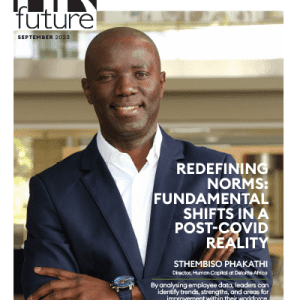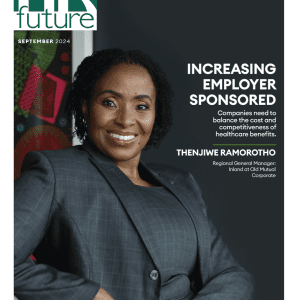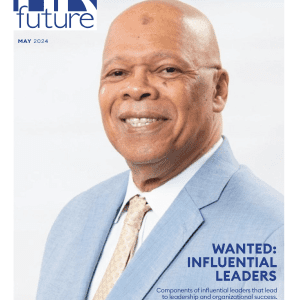Building a diverse and inclusive workforce is essential for any organization that wants to thrive. However, attracting and recruiting from underrepresented groups with different backgrounds, like women, minorities, veterans, people with disabilities, and other groups outside the majority remains a challenge for many employers.
If your current recruitment efforts seem to attract the same stream of candidates, it may be time to revisit your hiring processes with diversity and inclusion in mind. Use these tips to help reach talent from all walks of life:
1. Cast A Wider Talent Net Through Community Partners
Rather than post openings and passively hope minority applicants notice, take an active recruiting role by going directly into professional ecosystems in which underrepresented groups already participate.
Identify relevant conferences, career fairs, professional societies, student organizations, publications, and influencers frequented by your target communities, whether women, veterans, minorities, LGBTQ+ individuals, or those with disabilities. Establish partnerships so these stakeholders broadcast your openings to their engaged members.
For example, connect with different cultural associations to circulate roles to their base. Partner with engineering diversity programs at minority-serving colleges to help transition students into the workforce. Or collaborate with regional chapters of the Urban League and American Corporate Partners, upskilling local underrepresented communities with career readiness training.
Broadcasting jobs through both digital and in-person channels already well-trafficked by groups outside today’s majority exponentially expands the probability of surfacing hidden talents that aptly fit needs.
2. Re-Engineer Equitable Selection Processes
Unconscious biases subtly permeate traditional talent screening practices. Hiring managers leaning on academic pedigree or years of experience as proxies for ability rather than clearly defined capabilities needed for success disproportionately weed out those with nontraditional trajectories more common among minorities.
Without transparency around evaluation metrics or intentional safeguards against individual interviewer prejudice, qualified, diverse candidates hit invisible walls at various points through the funnel.
Begin modernizing antiquated selection processes by implementing diversity recruiting software with built-in mitigation against biases in initial resume screening and assessments of candidate potential. Structure skills-based evaluations circumventing pedigree biases.
Institute-structured interviews centered on role competencies over chemistry skewed by majority norms of “culture fit.” Integrate blind reviews of candidates when possible. Have diverse panels representing different backgrounds in assessment across each stage, checking for potential blindspots in any singular perspective.
The only way to combat assumptions is to intentionally re-engineer systems factoring in equity guardrails proactively rather than reactively. Enlist the help of technology like diversity recruiting software combined with updated practices factoring in merit-based equity from the outset, leaving no question around matching qualified minority talent to opportunities where they excel.
3. Communicate With Inclusive Messaging
How you portray open positions and the inclusivity of workplace culture matters enormously in whether underrepresented candidates see and trust themselves thriving in your environments. Given most have encountered workplace discrimination, subtly biased terminology, or demographics misrepresentative of them throughout past experiences, your job communications warrant extra sensitivity.
Avoid implicit biases with gendered language favoring majority groups. Use clear descriptions emphasizing skills, mindsets, and potential over narrow prerequisites that arbitrarily filter applicants. Transparently convey existing diversity, equity, and inclusion commitments and progress made to date through both qualitative stories and quantitative representation data.
The clarity and care put into external-facing messaging provide windows into internal attitudes, norms, and levels of inclusion that candidates can expect if they join. Meet them where they are in seeing themselves belong.
4. Cultivate Supportive Cultures That Retain
Bringing underrepresented groups through the door means little if the environments behind those doors don’t sustainably support, develop, and empower them to put down roots. Isolation and lack of community breed early attrition regardless of desire, erasing diversity gains. Weave support structures in from day one.
Seed internal mentorship circles and leadership training elevating minority next-generation talent. Sponsor employee resource groups, giving space for affinity connections and shared understanding between similar backgrounds. Promote underrepresented managers serving as aspirational representations of the growth trajectories possible, guiding new hires in navigating cultural nuances.
Even small, consistent touches conveying cultures of belonging—diversity calendars, heritage month recognitions, accommodations around religious needs—make the difference in seeing one’s identity reflected rather than relegated to assimilate. The everyday lived experiences determine if diversity hiring gains momentum.
5. Think Beyond Just Recruiting Numbers
Diversity hiring efforts often concentrate primarily on recruiting activity metrics—applicant flow rates, interview-to-hire conversion ratios, external partnerships made, etc. However, the number of diverse candidates attracted offers an incomplete picture. The critical question is whether cultures foster not just assimilation but inclusion, enabling minority professionals to add value through their distinctive perspectives.
Rather than focusing narrowly on recruiting more minorities, qualitative assessments should also be prioritized to determine whether existing underrepresented team members have equitable access to opportunities to advance innovative solutions. For example, examine if women or minority staff participate actively in ideation workshops and receive due visibility or credit for driving impactful initiatives.
Track their retention and promotion velocities compared to peers, indicating sentiments around feeling empowered. Regularly sample minority experiences through engagement surveys or discussions uncovering systemic points of friction still requiring attention even if hiring funnels show newly diversified entry inflows.
While numbers provide helpful indicators of progress made, the quality of cultural change ultimately determines if fresh worldviews retained uplift products, practices, policies, and workplace environments, equipping organizations to understand diverse customer experiences better. View robust representation across all layers to validate the effectiveness of embedded inclusion.
6. Make Diversity A Living Priority
One-off initiatives bound by quotas do little to challenge prejudices or transform environments. True change requires consistent visibility, investment, and accountability from the top down in diversity, which is indispensable to company values and competitive advantage. Rethink foundational norms, systems, and workflows—from talent practices to product development—through intersectional lenses from the outset so inclusion gets baked into company DNA.
Back verbal commitments with proportional budgets directed to equity programming staffed by experienced diversity leaders independent of other functions. They guide policies, training, communications, and governance structures that displace bias for good. Measure representation rates across all levels—especially leadership—with consistent dashboards transparent to all staff, signaling priority.
The vision then permeates all functions, engaging staff-wide in needed mindset shifts through regular open forums on current inclusion realities. With education and resources channeling collective ownership, your existing majority becomes partners in pulling minorities in rather than further alienating them.
Final Thoughts
Transitioning workforces take concerted reimagination beyond refreshing recruiting websites with stock diversity photos that narrowly impact actual minority applicants and hires. Take tangible steps to reach where qualified talent lies through trusted community conduits. Show underrepresented groups your environments give equal power and agency to help shape better futures ahead for all.
Guest Writer



























